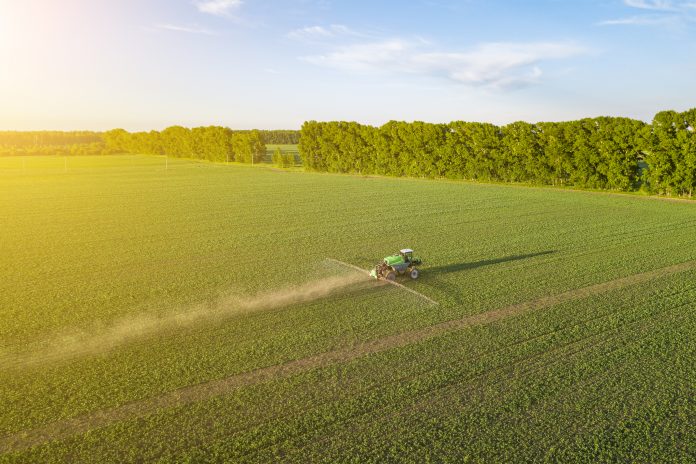Cecilia Van Cauwenberghe from Frost & Sullivan’s TechCasting Group, discusses alternative solutions to address pesticide risks for the environment and human health. Her article starts with the concern around pesticides use
Throughout the history of human agriculture, its development has been closely related to the use of different types of pesticides to improve yield (Sharma et al., 2020). The preventive measures to reduce risks from pesticide use demands a precise identification and categorisation of the toxicity pathway in the environment and human health. Furthermore, the administration routes (spray, drift, vaporisation), as well as the likelihood of occurrence of environmental disasters (surface run-off, unauthorised acts, leaks and drainages), play a leading role in assessing and managing pesticides-related risks.
Among the most dangerous products commercially available, the intensive use of β-Hexachlorocyclohexane, dichloro-diphenyl-trichloroethane, endosulfan endrin, heptachlor, heptachlor epoxide, and pyrethroids are highly associated with harmful effects on non-target organisms, including humans. Jepson and collaborators (Jepson et al., 2020) developed a system to classify pesticide risks and hazards concerning human and environmental health. The authors considered acute and chronic risks to human health, including respiratory and carcinogenic effects, as well as, environmental risks, comprising biomagnification and atmospheric ozone depletion and risks to aquatic life, terrestrial wildlife, and pollinators. The analysis delivered a stand-alone guideline for selection of lower-risk pesticides. However, most authors agree that beyond preventive measures and lower-risk options, the development of alternatives to pesticides for farming systems are crucially needed (Jhala et al., 2020).
The demand for a new perspective to address the challenge
Some authors also estimate that the evaluation of the conditions in the use of pesticides for farming systems, which would allow reducing their use and limiting their environmental impacts demand the mobilisation of experts from various disciplines, including agronomy, plant protection, soil sciences, hydrology, bioclimatology, ecotoxicology, economics, sociology (Aubertot et al., 2020). The authors particularly highlight the reduction of the dispersion of pesticides in the environment as critical, and bioremediation should be mandatory. In the opinion of the authors, alternative techniques could be partially effective and even perceived as a production risk for farmers. On that note, the regulatory landscape must be modified taking into account the participants in the agri-food sector.
Alternative solutions: Intensive pesticides use
Regarding alternative solutions, organic agriculture is gaining increasing attention among consumers. Organic agriculture is based on agricultural principles that avoid certain forms of pesticides, and certain fertilisation and feeding methods (Behera and Sahu, 2020). Indeed, the organic trend is sustainable and massive, continuously taking market share over conventional food and beverage in developed countries. Organic products have experienced massive democratisation with growth in conventional retailers. However, above all, organic is a question of labelling and standards, with one of the greatest challenges being the ability to offer a large variety of organic products. Organic products are defined by standards and labels that differ from country to country. The yields of organic agriculture are lower than conventional; however, consumers are willing to pay a premium for organic products.
According to Frost & Sullivan, new agricultural methods that address soil fertility challenges are radically changing production methods and the sourcing of numerous crops, including cereals. As such, regenerative agriculture represents a marketing opportunity beyond organic. Soil fertility challenges are amplified by intensive agricultural methods. While productivity and yields have increased with fertiliser use, the microbial life of the soil which enables plant growth is weakening. At the same time, carbon emissions have grown because of intensive input use. New herbs, insects, and diseases are becoming stronger and more resistant to pesticides. Higher costs of regenerative agriculture can be mitigated by more resilient feedstocks and less dependency on inputs.
Acknowledgements
I would like to thank all contributors from industry involved with the development and delivery of this article from Frost & Sullivan.
Further reading
- Aubertot, J.N., Barbier, J.M., Carpentier, A., Gril, J.J., Guichard, L., Lucas, P., Savary, S., Savini, I. and Voltz, M., 2020. Pesticides, agriculture and environment. How to reduce the use of pesticides and to limit their environmental impacts. HAL.
- Behera, S.K. and Sahu, B.K., 2020. Sustainability and Precision Agriculture. International Journal of Modern Agriculture, 9(3), pp.764-770.
- Jepson, P.C., Murray, K., Bach, O., Bonilla, M.A. and Neumeister, L., 2020. Selection of pesticides to reduce human and environmental health risks: a global guideline and minimum pesticides list. The Lancet Planetary Health, 4(2), pp.e56-e63.
- Jhala, J., Baloda, A.S. and Rajput, V.S., 2020. Role of bio-pesticides in recent trends of insect pest management: A review. Journal of Pharmacognosy and Phytochemistry, 9(1), pp.2237-2240.
- Sharma, A.K., Sharma, D. and Chopra, A.K., 2020. An overview of pesticides in the development of agriculture crops. Journal of Applied and Natural Science, 12(2), pp.101-109.











